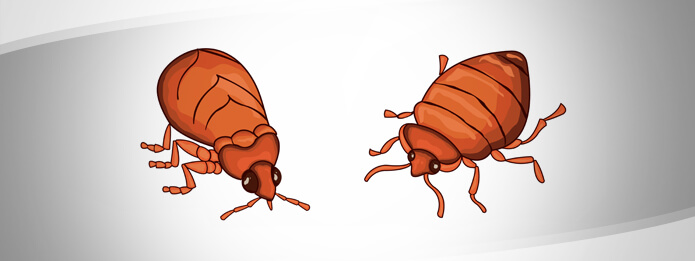Dealing with a bed bug infestation can be a stressful experience. These troublesome pests are known for their resilience as well as their uncanny ability to hide in the smallest of cracks and crevices. They are notoriously hard to eliminate, especially without the help of a seasoned professional.
But professional exterminators can’t handle the job alone. You have to do your part too. Preparing your home for the exterminator is a crucial step in ensuring successful treatment. The better you’ve prepped the better the outcome. So let’s look over a few key points that should help get your home ready for an effective bed bug treatment.
The Importance of Preparation
Proper preparation is critical to a successful bed bug treatment. It’s the only way to ensure that your exterminator can access and treat the areas in your home where bed bugs may be hiding. Remember, a bed bug’s survival depends on its ability to hide, and these pests are masters when it comes to keeping a low profile.
Getting your home ready for the exterminator will involve clearing out closets and drawers, reducing clutter throughout your home, and organizing your furniture so the exterminators have easy access any and all areas where bed bugs may be hiding.
Eliminate the Clutter
Reducing clutter is a key step in getting your home ready for the exterminators. Start by removing unnecessary items from floors, closets, and under beds. Place the items in sealed plastic bags or bins to prevent any bed bugs from escaping and spreading to other areas of your home. Try to avoid moving items from room to room to further reduce the chances of spreading the infestation.
Clothing, Bed Linen and Other Washable Fabrics
Linens and clothing present a couple of issues when prepping for bed bug treatment. First, bed bugs are likely to hide in the folds of clothing and other fabrics. So everything needs to be inspected and laundered. Washable fabrics (including removable sofa and chair covers) should be washed in hot water and dried at the highest setting. This will kill bed bugs at all of their life stages. Once washed items should be sealed in plastic bags or containers to prevent re-infestation.
Clothes and linens can also be an impediment to exterminators, so we need to deal with them before any treatment starts. Closets should be totally emptied to allow access for your pest control team. Dresser drawers should also be emptied along with any linen closets or cupboards. Again, for treatments to be successful your exterminator will need to be able to treat any place where bed bugs might hide.
Move and Disassemble Furniture
If possible furniture should be moved away from the walls so exterminators can easily move around rooms. Mattresses should be removed from bed frames and if possible those bed frames should be disassembled. Drawers should also be removed from dressers. The idea here is to give your exterminator better access to the cracks and crevices where bed bugs like to hide.
Preparing Personal Items
Some personal items, such as books and small electronics, can often become home to wandering bed bugs. These sorts of items should be carefully inspected to determine if they need treated. Check with your exterminator to find out about the best options for handling these types of items. They may need to be treated separately or, at minimum, isolated while your home is being treated.
Treating Sensitive Areas
Coordinating with your pest control experts is a critical part of ensuring an effective and successful bed bug removal. Inform your exterminator if you have any sensitive areas in your home such as a nursery, elderly person’s bedroom, or pet playgrounds. In some cases alternative treatment options may be necessary to safely eliminate the bed bugs while keeping the area safe for family members.
Temporary Relocation
Depending on the severity of the infestation and the treatment method being used you may need to vacate your home while your exterminator team is at work. Again, coordinating with your pest control service is essential. They’ll let you know how long you need to be out of the house and inform you of any special precautions you may need to take before re-entering your home.
Follow-Up Maintenance
Depending on the size of the infestation total elimination of the bed bug population may require multiple treatments. Consult with your pest control experts and schedule follow-up inspections to help prevent potential re-infestations. Prevention is key, and your bed bug removal team can suggest ways to avoid bed bug troubles in the future.
Preparing for bed bug treatments takes careful planning and attention to detail. Work closely with your pest control professionals to ensure that your home is properly prepped and ready for treatment. Remember, the key to a successful bed bug treatment is proper preparation and consistent follow through. But with diligence, and by working hand in glove with your exterminator, you can restore your home to a bed bug free zone.
Published by Scott Palatnik
We are Bedbug Inspection & Elimination specialists.
From Manhattan to Montauk and all points in between.
Got questions?
We got answers.
Give us a call @ 212-299-9186 or 516-619-6149

